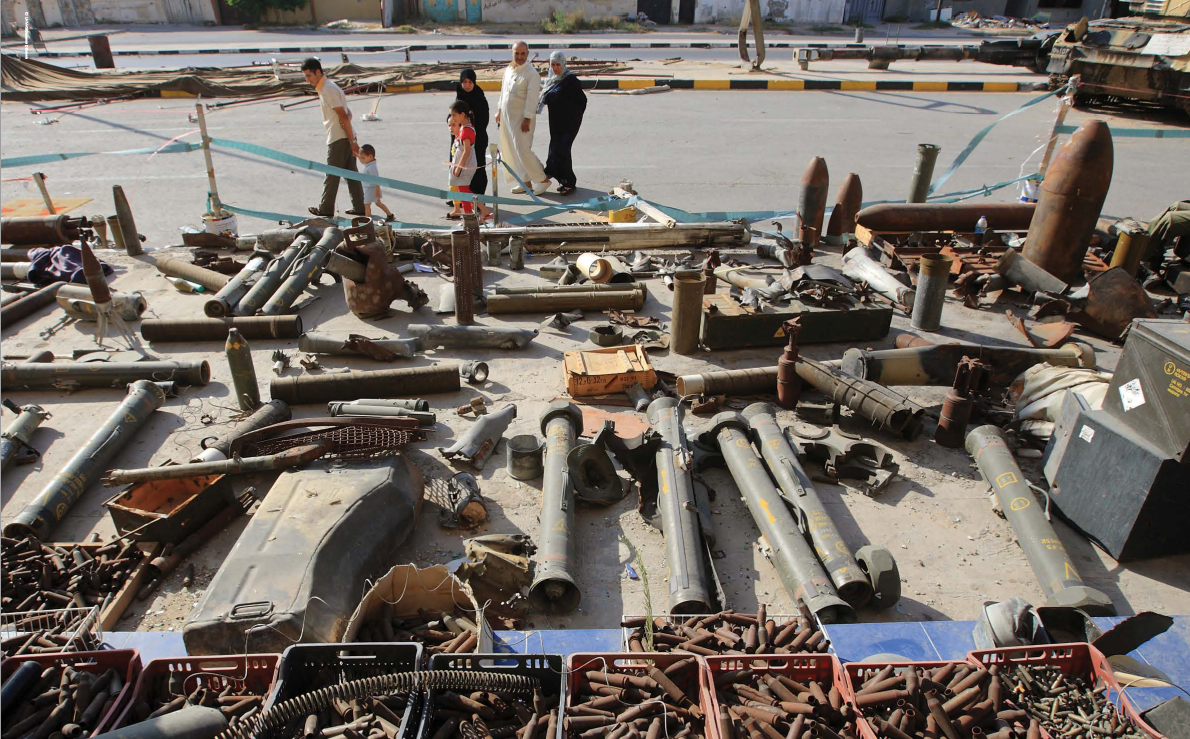
Title
Explosive weapons in populated areas
Title
Explosive weapons in populated areasThe use of explosive weapons in populated areas (EWIPA) is a major cause of civilian deaths and injuries during armed conflict. Over the past decade, some 238,000 civilians have fallen victim to the use of EWIPA (AOAV, 2021). On average, 90 per cent of victims of attacks using explosive weapons in populated areas are civilians.
The use of explosive weapons in populated areas also has a severe reverberating humanitarian impact. People injured often require specialist medical and psychosocial care, in both the immediate and long term, which is often unavailable in conflict situations. Explosive weapons are a leading cause of damage to health-care facilities, hampering the delivery of medical care. Housing and essential infrastructure, such as drinking water and wastewater treatment plants and electricity supply systems, are damaged or destroyed, increasing the risk and spread of disease and further burdening the healthcare system. Schools are damaged or destroyed, interrupting or halting access to education. The destruction of schools also exacerbates gender inequalities and expose children to additional risks. In some places, families do not send their children to school because of the fear of explosive-weapon attacks.
People in affected communities often have no choice but to leave their homes, for long periods and in precarious conditions. Displaced populations often face a subsequent cycle of compounding impacts that negatively affect their well-being. Explosive weapons leave explosive remnants of war that can kill and injure civilians long after hostilities have ended and prevent or delay reconstruction work or agricultural production, as well as the return of refugees and displaced persons.
The widespread destruction caused by the use of explosive weapons in populated areas has a dramatic effect on post-conflict reconstruction requirements and costs, and hinders development processes.

People collected ammunition remnants from Misrata city, and made an open air museum in Tripoli Street, Misrata, Libya.
Types of explosive weapons
Many types of explosive weapons exist, and many are in use by national military forces and non-State armed groups. Explosive weapons refer to conventional weapons that are activated by detonation of a high explosive substance creating a blast and fragmentation zone. They include artillery shells, missile and rocket warheads, mortars, aircraft bombs and improvised explosive devices (IEDs), among others.
Different technical features dictate their precision and explosive effect, but these weapons generally create a blast-and-fragmentation zone that makes their use highly consequential for civilian wellbeing and infrastructure in populated areas. Particular concern exists over the higher risk to civilians posed by the use in populated areas of explosive weapons that have “wide-area effects”. This is because of the scale of their blast, their inaccuracy, the use of multiple warheads across an area or a combination thereof.
Taking action
The United Nations Secretary-General has called on Member States and all parties to conflict – both national armed forces and non-State armed groups – to avoid using explosive weapons with wide-area effects in populated areas.
Good practice does exist in this area. Some military forces, such as the International Security Assistance Force in Afghanistan and the African Union Mission in Somalia, put in place policies to avoid or restrict the use of certain explosive weapons in certain situations in order to better protect civilians.
In 2017, OCHA documented these and other practices in a compilation of military policy and practice relating to the use of explosive weapons in populated areas. The compilation has been shared with States, national armed forces and other relevant actors to help promote and contribute to a change in practice.
Fully documenting the humanitarian impact of the use of EWIPA is key to take appropriate action. The UN, ICRC and NGOs have published numerous studies highlighting the short and long-term humanitarian impact of explosive weapons. To help partners reinforce data collection capacity, the UN Institute for Disarmament Research (UNIDIR) designed a menu of indicators to measure the reverberating effects on civilians form the use of EWIPA. UNIDIR has also produced a research paper exploring opportunities to improve military policies and practice to reduce civilian harm from explosive weapons in urban conflict and a factsheet discussing the gendered impacts of EWIPA.
A new political declaration
After three years of negotiations, 83 Member States endorsed the Political Declaration on the Humanitarian Consequences of the Use of Explosive Weapons in Populated Areas (EWIPA). The United Nations Secretary-General has supported those efforts since 2009, and notably through the Agenda for Disarmament. Moving forward, supporting the universalization of the Declaration as well as its effective implementation lie at the heart of the UN’s efforts.
In numbers
- A total of 20,793 people were reported killed or injured by explosive weapons in 2022. Of these, 10,351 people were civilians.
- When explosive weapons were used in populated areas, 94 per cent of those killed or injured were civilians. This compares with 12 per cent in other areas.
- IEDs were responsible for at least 21 per cent of all civilian casualties from explosive violence.
- Air-launched explosive weapons were responsible for 19 per cent of all civilian deaths and injuries.
- Ground-launched explosive weapons were responsible for 52 per cent of all civilian deaths and injuries.
Source: Action on Armed Violence, Explosive Violence Monitor 2022 (2023)
| Resources |








